My Anxieties Are Not For Your Amuse
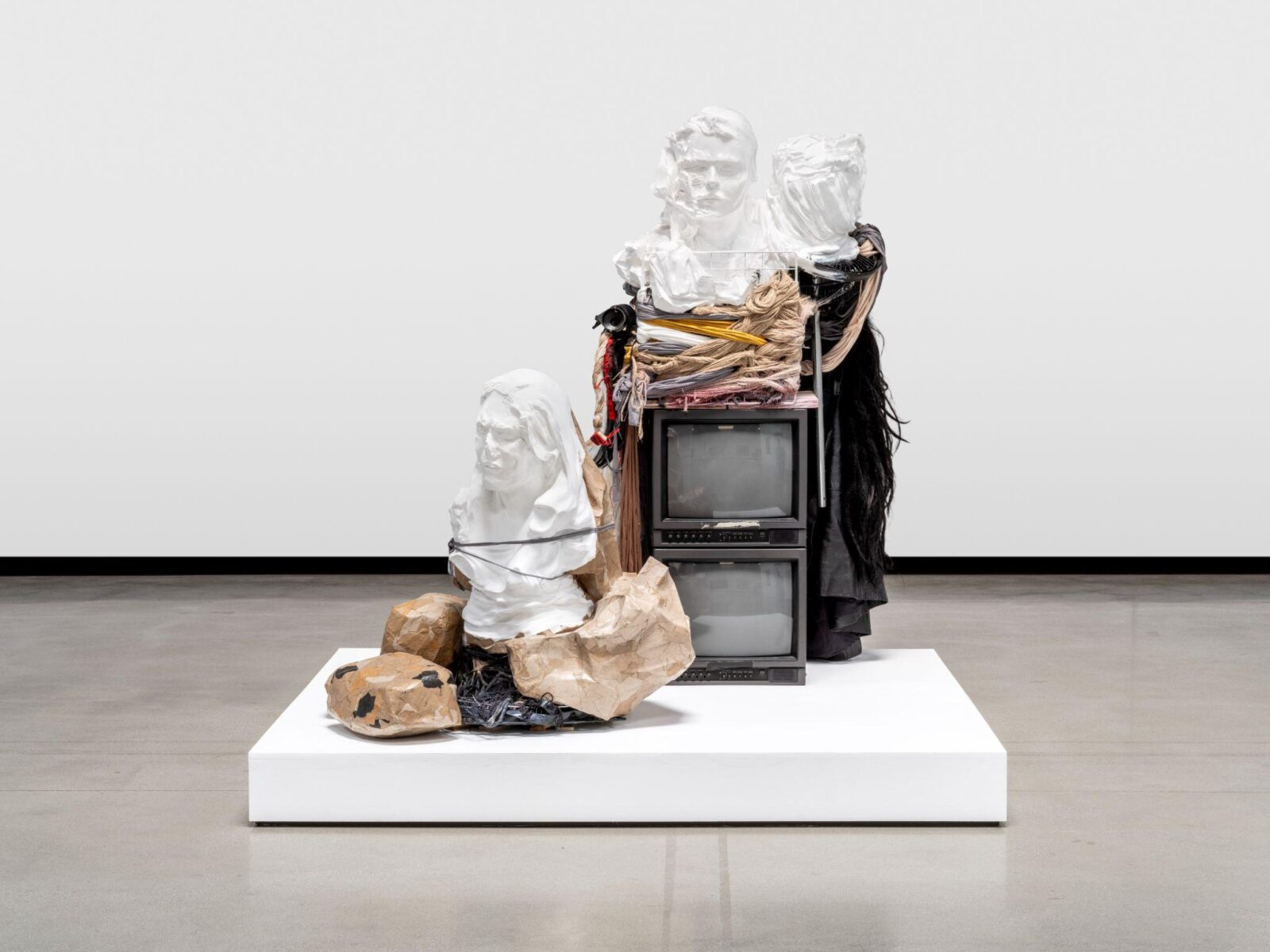
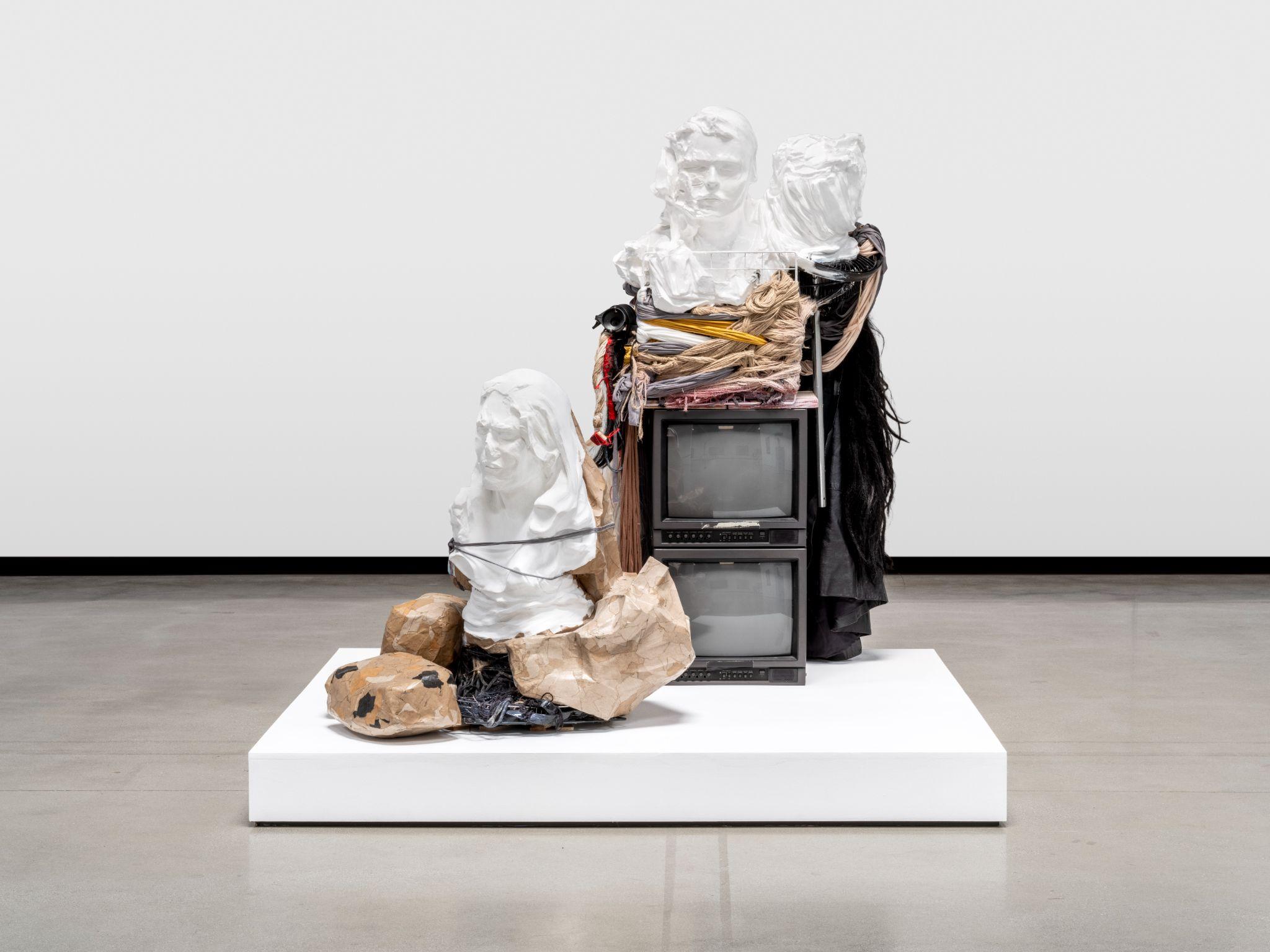
Dating back to the classical period of ancient Greece, the term hysteria was first introduced by Hippocrates as a means to diagnose what he believed to be a wandering uterus that became trapped in varying parts of a woman’s body due to sexual deprivation, leading to otherwise unexplainable symptoms such as fainting, seizures and even paralysis. The word “hysteria” derives directly from the Greek word for uterus—“hystera”—and Hippocrates, along with other noble physicians of the time, supposedly recommended marriage and sexual relations as the remedy for such a condition, as intercourse was widely thought to help keep the uterus in its place.
Centuries later, in the Middle Ages, hysteria became attributed to witchcraft and demonic possession, resulting in exorcisms and imprisonment, yet, as the world spun and subsequent eras came and went, the disorder remained largely female-specific—modernly understood as a scapegoat for what’s now fair to call misogynistic terror. At Jeffrey Deitch in L.A., It Smells Like Girl, a thematic group exhibition, co-presented by New York-based Company, confronts the grotesque roots of hysteria, illustrating how women’s health issues have been historically misconceived and often too quickly dismissed due to inherent gender bias and a lack of scientific knowledge regarding female biology.
Told from thirty five female artists’ perspectives, across varying mediums—including painting, video, sculpture, performance, and installation—It Smells Like Girl reclaims the pathological narrative by squashing it. Mostly figuratively, but also literally, like in Aleksandra Waliszweska’s Untitled (2024), where a she-devil grimly pierces a shriveled snake with her red stiletto. The serpent is strongly related to medicine through the symbol of the Rod of Asclepius prompting viewers to reflect on the systemic anxieties and fantasies that have been ascribed to women’s bodies. Here, femininity lies at a paradoxical crossroads, dangling the tension between autonomy and expectation, self-expression and the pressure to conform, between defiance and power but also sensitivity and repression for what we as a female species have been ingrained to endure.
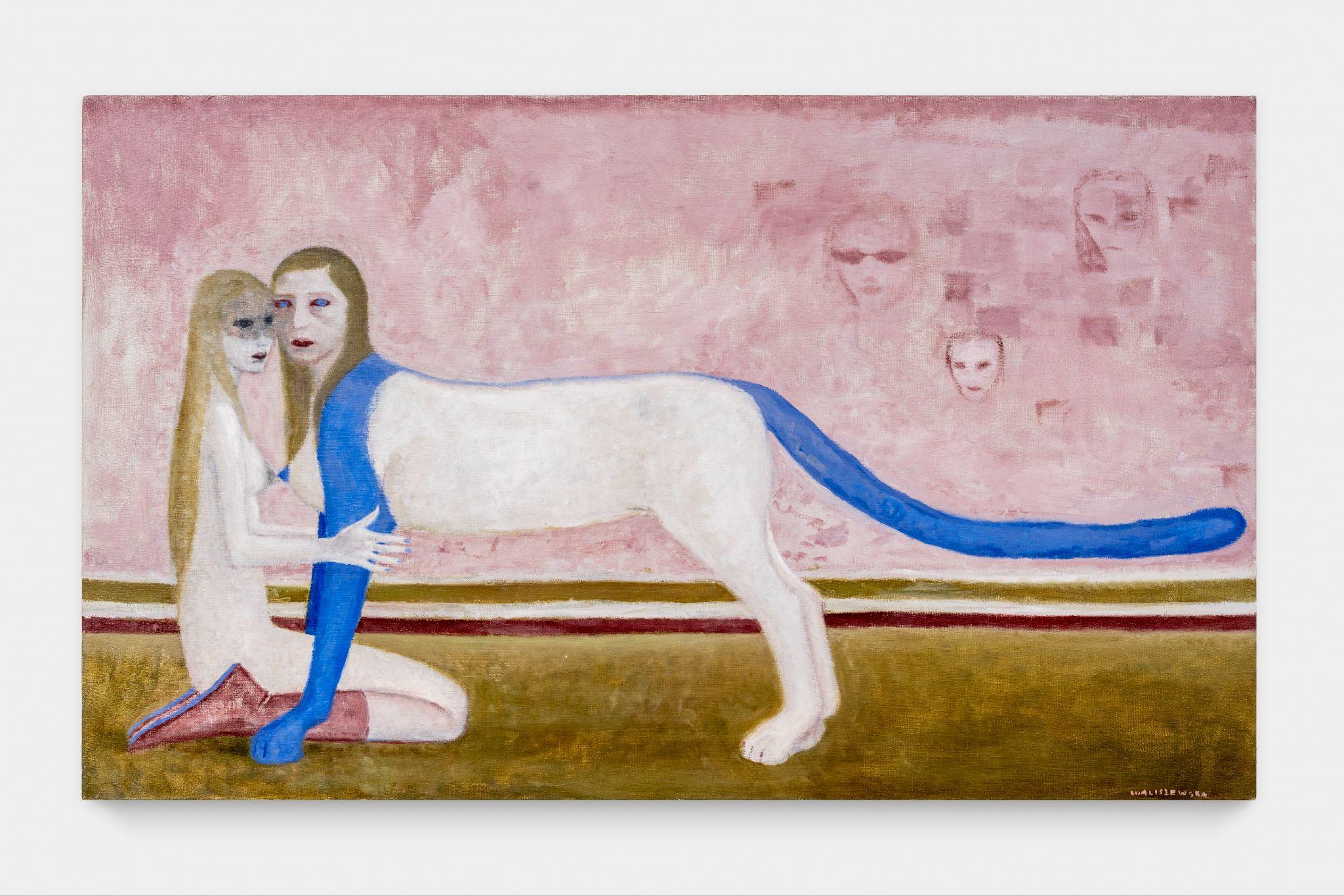
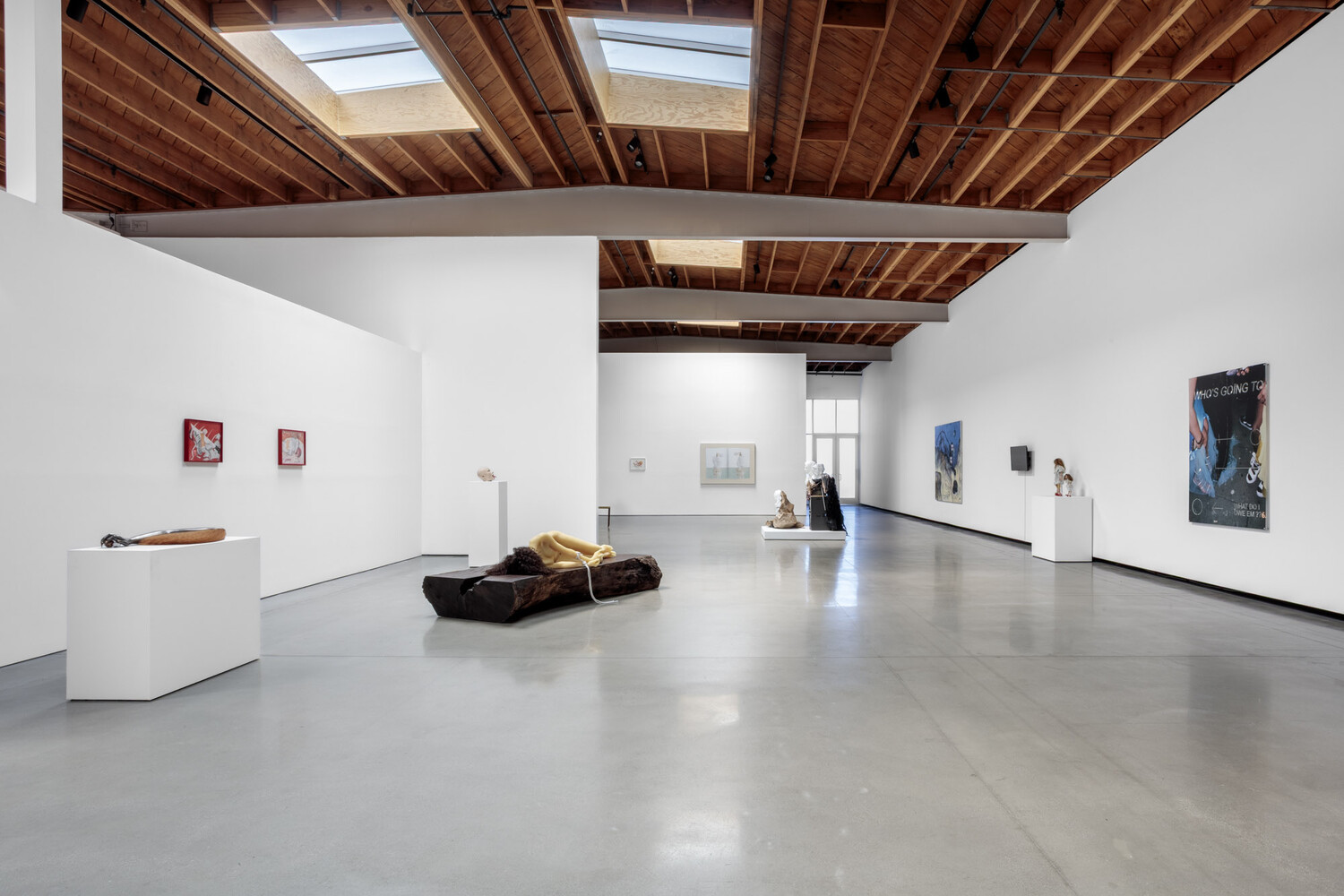
Created to disturb traditional feminine vantages, Isabelle Albuquerque beautifully presents Orgy For Ten People In One Body, an erotic and widely expressive form of self-portraiture which initially exhibited ten distinct headless renderings at Jeffrey Deitch in New York two years ago. Plucked from that exhibit and showcased here is Number 10, a life-scale cast of Albuquerque’s own body made out of beeswax, human hair, walnut, and rope—whose wrists are tied in bondage and head turned, presumably in shame—examining themes such as collective identity, transhumanism, and the emanation of desire. One of the few Los Angeles-based artists represented in It Smells Like Girl, Albuquerque reclaims the nude by provoking viewers with her uncanny transmutation of female anatomy, empowering said body while also leaving questions of consent and pleasure in doing so.
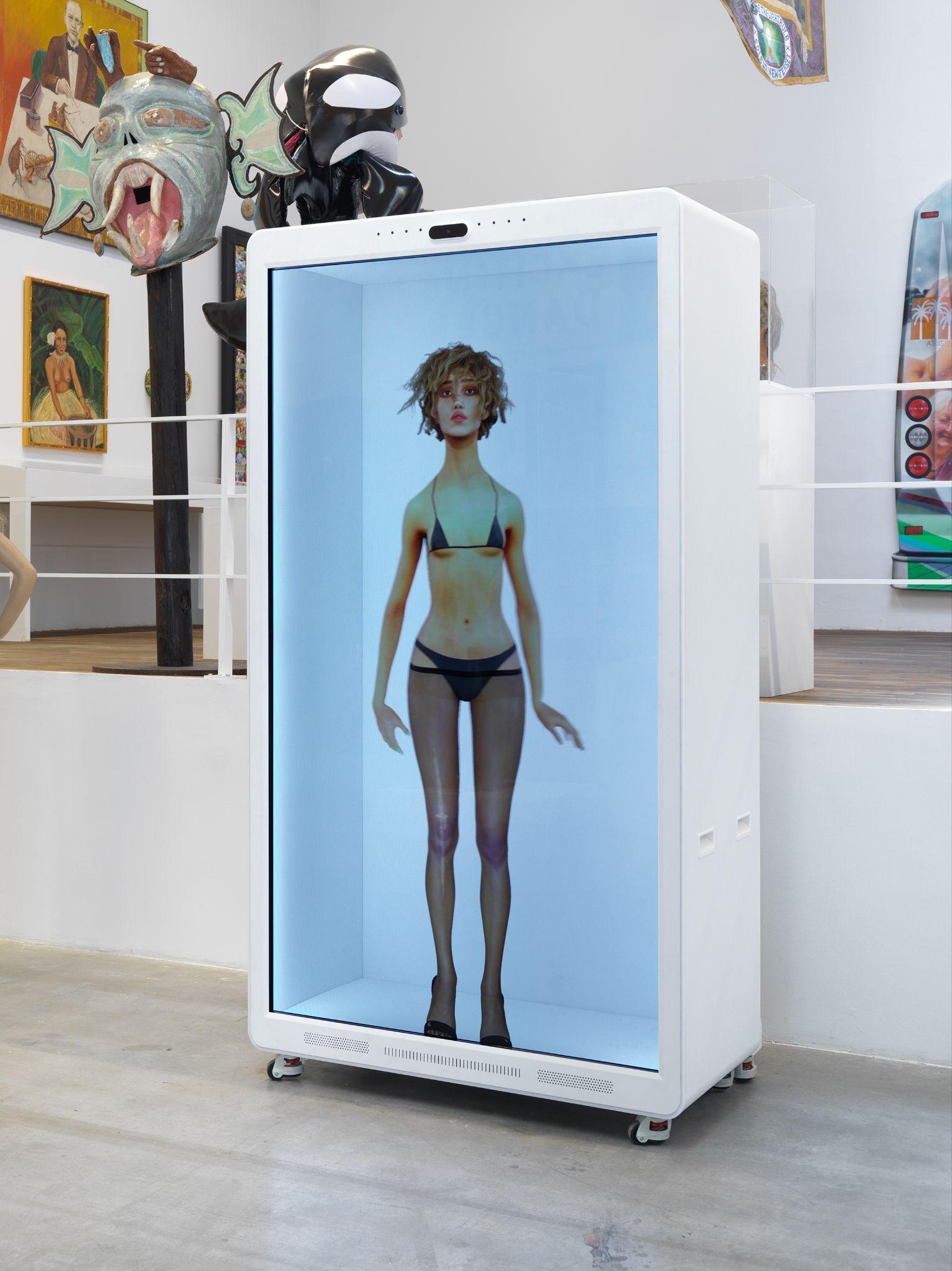
One of the most engaging works of art in the exhibit is Nadia Lee Cohen’s Entitled (2025). An exclusive edition, just one of two, Entitled is inspired by the frustrating amount of care required to preserve digital pets like Tamagotchi, reminiscent of Cohen’s upbringing in the Millennial age. Replicating this digital concept is Cohen herself, posing as an inverted model with a strictly limited lifespan, prompting viewers to get close and connect with her avatar before its health wears off. However, we quickly learn that here femininity is a mirage and that a single touch to her abdomen leaves Cohen bruised, betrayed, and recoiling. Eventually, your touch will lead to her death, only to be rebirthed into the same inescapable cycle; a similar pattern to that of the double bind, where women are forever gridlocked between two sets of contradictory expectations as a result of generational, antithetical gender stereotypes.
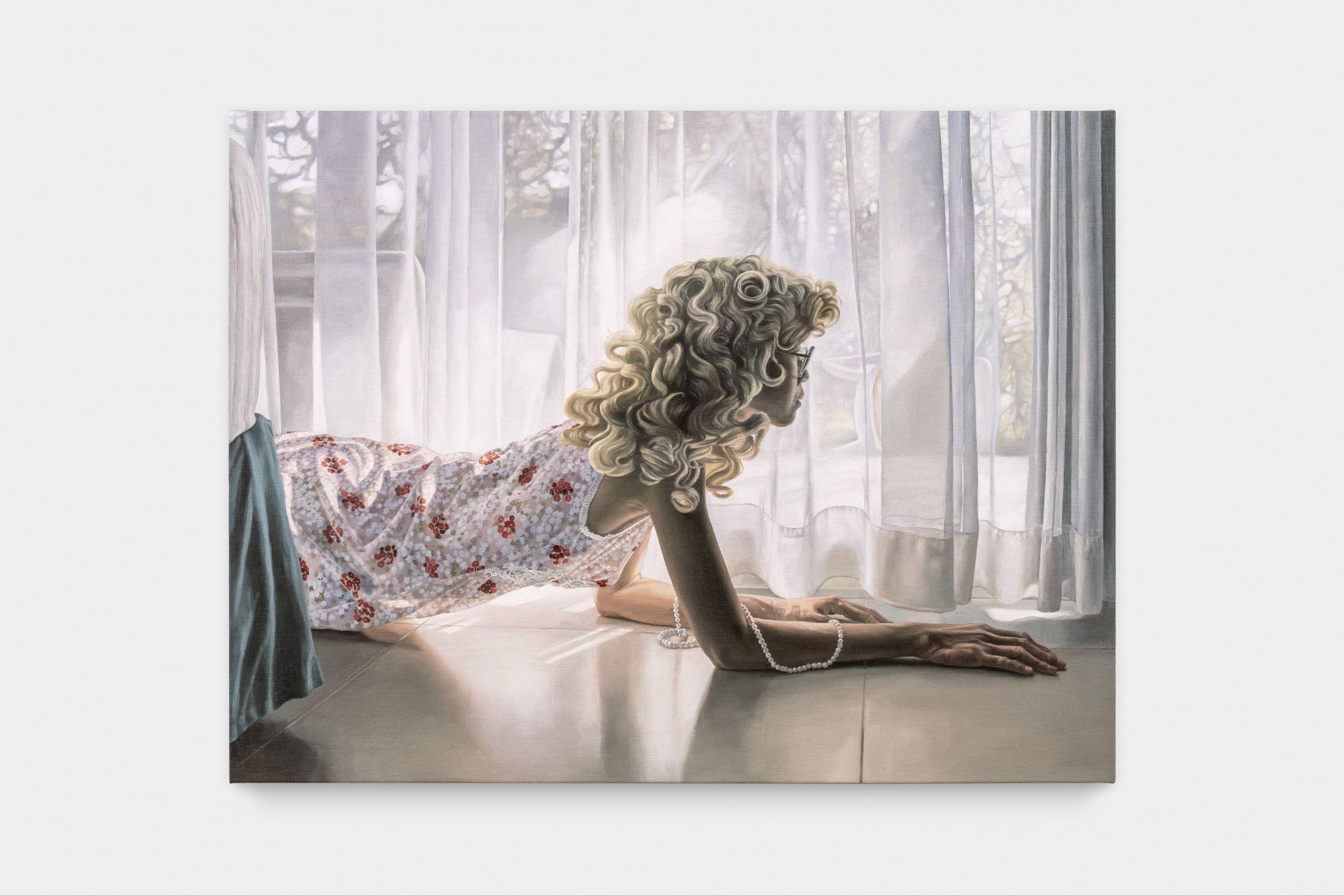

Using readymade furniture and found objects, as well as new and recycled materials, Oregon-born artist Jessi Reaves dismantles what’s visible to the surface eye to create something more complex, something that challenges preexisting standards of aesthetic and function. In just under ten minutes, Reflect as one (2023), Reaves conforms to this notion of recontextualization by scavenging selected footage and rearranging it to create a purposefully intercut video—one that seeks to evoke the effect of a movie playing while one passively watches it, playing homage to the parallel desires women face as they grow older.
“I like using the image of a young girl as a stand-in for myself, mostly because she is relieved of seriousness and control,” Reaves writes to Cultbytes. “Her loose movements and innocence easily contrast the melodrama of the appropriated audio. Through strategic cropping and replicated parts of costumes, the character travels through different stages of life, or different parts of a fantasy about their future.”
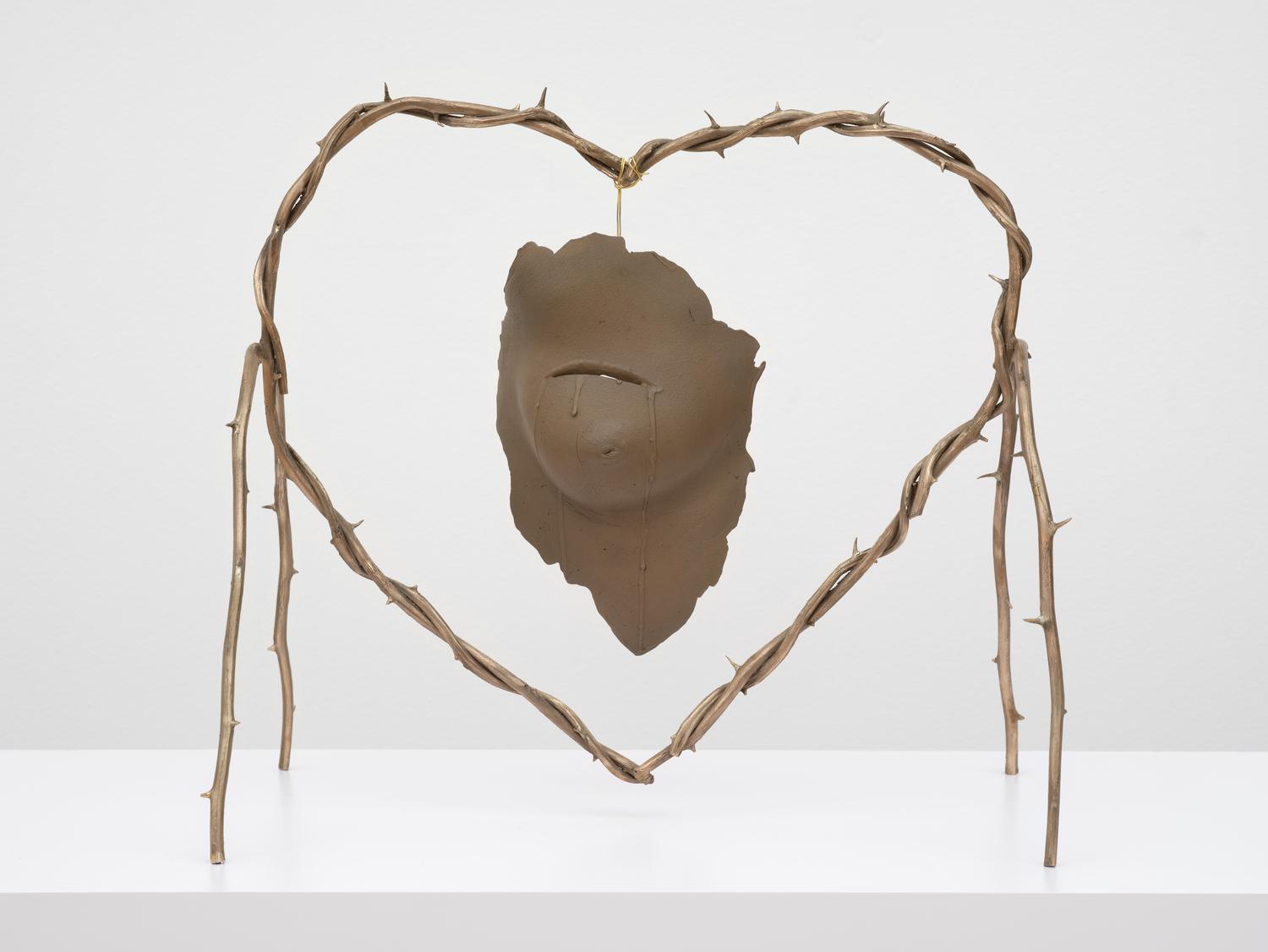
In Self-Portrait with Thorn Heart (2023-2025), another L.A. artist, Kelly Akashi reminds audiences that it’s not just societal expectations women juggle, but biological and physical sacrifices we make to survive. Made up of a mold of her own breast Akashi took in 2023, and latterly marked an incision upon in the very same place her surgeon did as part of her cancer treatment, Self-Portrait with Thorn Heart serves as a symbol of both suffering and survival—with the title referencing Frida Kahlo’s Self Portrait with Thorn Necklace and Hummingbird (1940), both of which share compelling arguments of pain and resistance.
“Emotion can be a powerful teacher,” Akashi reasons in her artistic philosophy. “The historical tendency to dismiss or control it by labeling signals of deeper, sometimes physical, distress as ‘hysteria’ feels echoed in my own experience. This work carries that tension: it channels vulnerability and pain into form, insisting that what has often been discredited as ‘excessive’ is in fact evidence of survival.”
Ultimately, while each piece in It Smells Like Girl differs in terms of medium and subject matter, strong intention runs through the exhibit, reaffirming the truth that femininity is indeed far from fragile. A vulnerable assemblage of stories lived and systems opposed, It Smells Like Girl embraces the visual disturbance of female dichotomy, leveraging hysteria as a contemporary synecdoche for the larger, more complex gendered cultural landscape. The emotional undertone is volatile—lending as both a scream for survival but also a ridicule of this very same spectacle—accenting feline references, an excessive amount of the color red, and many, many naked organs—playing into the stereotypes of hormonal flair while also burying them deep in the layers of profound oscillation. Because nothing’s more powerful than an emotionally informed woman.
It Smells Like Girl is on view through November 1, 2025 at 925 N. Orange Drive, Los Angeles, and features Kelly Akashi, Isabelle Albuquerque, Danica Barboza, Tosh Basco, Stefania Batoeva, Meriem Bennani, Jibz Cameron, Liz Craft, Janiva Ellis, Eunnam Hong, Juliana Huxtable, Nadia Lee Cohen, Tala Madani, Jeanette Mundt, Naudline Pierre, Roksana Pirouzmand, Jessi Reaves, Bunny Rogers, Gabriela Ruiz, Bárbara Sánchez-Kane, Diane Severin Nguyen, Flannery Silva, Marianna Simnett, Connor Marie Stankard, Frances Stark, Jordan Strafer, Martine Syms, Frieda Toranzo Jaeger, Nora Turato, Michelle Uckotter, Cajsa von Zeipel, Ambera Wellmann, Aleksandra Waliszewska, K8 Hardy, and Women’s History Museum.

